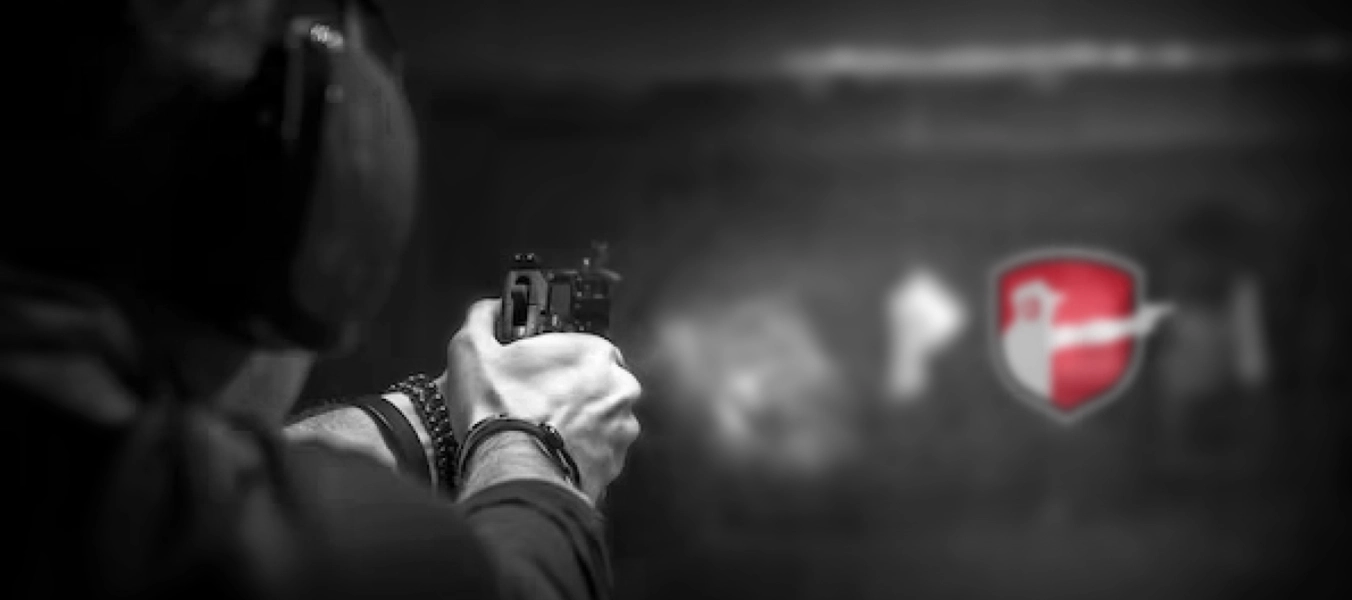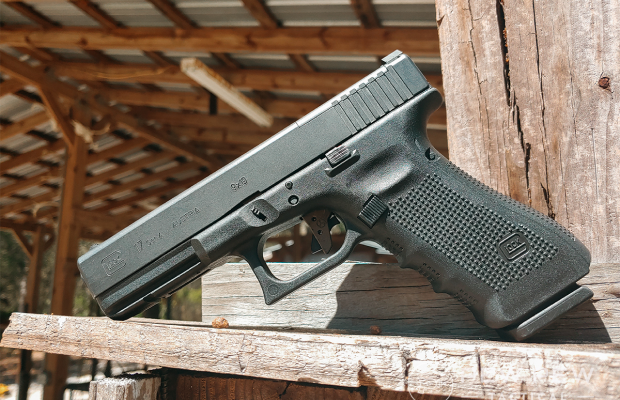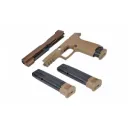
Austrian M1867 Werndl-Holub Rifle


Gun Stats
Austrian M1867 Werndl-Holub Rifle for Sale
Austrian M1867 Werndl-Holub Rifle Critic Reviews
Austrian M1867 Werndl-Holub Rifle Description
The second half of the 19th C saw a tremendous amount of innovation in firearm designand development, going from muzzle-loading single shot black powder muskets toself-feeding fully automatic machine guns with rates of fire of hundreds of rounds perminute. This rifle began as the revolutionary M1867 Werndl-Holub, a single-shotbreech-loading rifle which replaced the Wanzl breech-loader conversion of themuzzle-loading Lorenz rifle in the service of the Austro-Hungarian Army. Josef Werndl(1831-1889) and Karel Holub (1830-1903) designed and patented the design and Werndllater bought out all the rights.The original 1867 model of the WerndlHolub featured an external hammer mounted onthe lock plate, however, in 1873 they moved the hammer to the inside of the lock plateand it became known as the M1873. Though they are called internal hammers, thehammer is still exposed, but pivots inside the lock plate. The M1873 are far rarer than theoriginal 1867 model. Additionally, this example, is in fact a rarer version than the normalinfantry Rifle in that it is classed as a WERNDL JAEGER RIFLE, having an extra steelhand rest behind the standard trigger guard. These were issued only to Special troopssuch as Pioneers and Sappers. WG (sterreichische Waffenfabriksgesellschaft)produced the Werndl and it was originally chambered for the 11mm scharfe Patrone M.67(11.1542R) cartridge. In 1877 the military rechambered many of the Werndls for thebottleneck 11mm scharfe Patrone M.77 (11.1558mmR) cartridge. These were refittedwith a rear ladder sight graduated to 2100 paces. This example features the 1400 paceladder sight of the original M1873. In spite of the Werndl being long obsolete by WorldWar I, the Austro-Hungarian forces issued Werndl rifles to rear-echelon units to free upmore modern rifles for use by front-line troops and it was not fully retired until 1918.The principal feature of the M1867 and its later variants was the drum-breech, which,while sturdy and secure, compromised extraction. The rifle had a one piece stock with astraight wrist, a back-action lock and an external hammer (M1867) and internal hammer(M1873 and M1877). There were two screwed barrel bands and a nose cap (replaced bya third screwed barrel band on the M1873 and M1877); sling swivels lay under the middleband and butt. A cleaning rod was carried beneath the muzzle. A bayonet lug appearedon the right side of the muzzle. Standard infantry-pattern trigger guards were plain ovals,but a finger spur was substituted for Jaeger units.This is a rotating drum-action breech loader that cant easily be missed for anything else.When the hammer is drawn back the longitudinal drum breechblock is rotated on a centralpin by means of a flat knurled lever protruding from and integral with the drum. The drumhas a section cut out to allow loading of a fresh round and, when loaded, the drum/block isrotated back, the cut-out being replaced by the solid face of the block. The firing pin islocated offset within the block in a manner reminiscent of the Snider and Trapdoor blocksand recessed within the block allowing the block to pivot within the receiver.The example offered here may be a rare variant, as I have seen reference to threeversions; infantry rifle, short rifle, and carbine, however, I have never seen photos orspecifications of the short rifle. The infantry rifle had a barrel length of 33.4 and anoverall length of 50.4, while the carbine had a barrel length of 22.4 and overall length of39.3. This example, however, has a barrel length of 29.4 and an overall length of 46.4and it does not appear to have been cut down. Though the front sight is missing, the flatwhere it was mounted is in the correct location relative to the end of the barrel. Thecleaning rod is original length and matches the barrel length and the stock features thethree barrel bands as found on the standard infantry rifle. Lock plate is stamped with theAustrian double-headed eagle and OE/WG logo (Oesterreich Waffenfabrik Gesellschaft)and the date 1875. Most of these were originally marked with either a 2 or 3 digit dateand this one appears to have a separate 18 stamp added in front of the 75. Serialnumber 8023 is stamped on barrel and breech, but the rotating breech block isnumbered 8193, likely an early replacement during its period of use since the wear andpatina match perfectly. Butt plate tang stamped with unit markings 56. LW./686.(Probably 56th Landwehr Regiment, rifle #686). Barrel stamped with OE/WG logo andWn 76 Ga for the Vienna (Wien) proof house in 1876. The gun shows age and weartypical of a 150 year-old field-used rifle with scattered pitting on the steel parts and variousscratches and dents in the stock. Mechanically very good and the stock is sound with nocracks or missing pieces.Technical Data
Austrian M1867 Werndl-Holub Rifle Ballistics
Austrian M1867 Werndl-Holub Rifle Parts & Upgrade
How much is a Austrian M1867 Werndl-Holub Rifle worth?

Want To Sell Your Austrian M1867 Werndl-Holub Rifle
-
We make you an quick cash offer online
-
We find the dealer that offers you the most money
-
Get cash for your gun or do a trade in
Quick Cash Offer »

How We Compare to Selling It Yourself
We take all the hassle out of selling your gun.

Save Time
Quick Cash Offer
Get your cash offer in minutes
Selling it Yourself
Can take months to sell your gun privately

Buyer
Quick Cash Offer
Trusted retailers will pay you for your gun
Selling it Yourself
You don't know who you're selling to, or if they'll rip you off

Price
Quick Cash Offer
Get your cash offer in minutes
Selling it Yourself
It costs money to place ads to sell your gun, and it takes a lot of time

Difficulty
Quick Cash Offer
Easy online paperwork and registration process for your safe and legal payout
Selling it Yourself
You have to trust the buyer to pay you, and trust that you're following the law






